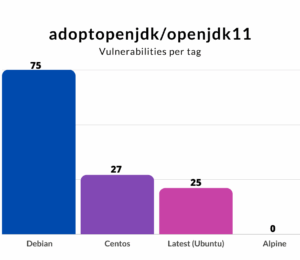Leverage the Richness of HTTP Status Codes
- May 02, 2023
- 5415 Unique Views
- 3 min read
If you're not a REST expert, you probably use the same HTTP codes over and over in your responses, mostly 200, 404, and 500.
If using authentication, you might perhaps add 401 and 403; if using redirects 301 and 302, that might be all.
But the range of possible status codes is much broader than that and can improve semantics a lot.
While many discussions about REST focus on entities and methods, using the correct response status codes can make your API stand out.
201: Created
Many applications allow creating entities: accounts, orders, what have you. In general, one uses HTTP status code 200 is used, and that's good enough. However, the 201 code is more specific and fits better:
The HTTP
201 Createdsuccess status response code indicates that the request has succeeded and has led to the creation of a resource. The new resource is effectively created before this response is sent back. and the new resource is returned in the body of the message, its location being either the URL of the request, or the content of theLocationheader.-- MDN web docs
205: Reset Content
Form-based authentication can either succeed or fail. When failing, the usual behavior is to display the form again with all fields cleared.
Guess what? The 205 status code is dedicated to that:
The HTTP
205 Reset Contentresponse status tells the client to reset the document view, so for example to clear the content of a form, reset a canvas state, or to refresh the UI.-- MDN web docs
428: Precondition Required
When using Optimistic Locking, validation might fail during an update because data has already been updated by someone else. By default, frameworks (such as Hibernate) throw an exception in that case. Developers, in turn, catch it and display a nice information box asking to reload the page and re-enter data.
Let's check the 428 status code:
The origin server requires the request to be conditional. Intended to prevent the 'lost update' problem, where a client GETs a resource's state, modifies it, and PUTs it back to the server, when meanwhile a third party has modified the state on the server, leading to a conflict.
The code describes exactly the conflict case in optimistic locking!
Note that RFC 6585 mentions the word conditional and shows an example using the If-Match header. However, it doesn't state exactly how to achieve that condition.
409: Conflict
Interestingly enough, the 409 code states:
The HTTP
409 Conflictresponse status code indicates a request conflict with current state of the server.-- MDN web docs
It can also apply to the previous case but is more general. For example, a typical use case would be to update a resource that has been deleted.
410: Gone
Most of the time, when you GET a resource that is not found, the server returns a 404 code. What if the resource existed before but doesn't anymore? Interestingly enough, there's an alternative for a particular use case: The semantics of the returned HTTP code could tell that. That is precisely the reason for 410.
The HTTP
410 Goneclient error response code indicates that access to the target resource is no longer available at the origin server and that this condition is likely to be permanent.If you don't know whether this condition is temporary or permanent, a 404 status code should be used instead.
-- MDN web docs
300: Multiple choices
WARNING: This one seems a bit far-fetched, but the IETF specification fits the case.
HATEOAS-driven applications offer a root page, which is an entry point allowing navigating further.
For example, this is the response when accessing the Spring Boot actuator:
"_links": {
"self": {
"href": "http://localhost:8080/manage",
"templated": false
},
"beans": {
"href": "http://localhost:8080/manage/beans",
"templated": false
},
"health": {
"href": "http://localhost:8080/manage/health",
"templated": false
},
"metrics": {
"href": "http://localhost:8080/manage/metrics",
"templated": false
},
}
}
No regular resource is present at this location. The server provides a set of resources, each with a dedicated identifier. It looks like a match for the 300 status code:
[... ] the server SHOULD generate a
payload in the 300 response containing a list of representation
metadata and URI reference(s) from which the user or user agent can
choose the one most preferred.
Conclusion
Generally, specific HTTP statuses only make sense when having a REST backend accessed by a JavaScript frontend. For example, resetting the form (205) doesn't make sense if the server generates the page.
The issue with those codes is about the semantics: they are subject to a lot of interpretation. Why would you choose to use 409 over 428? It may be a matter of my interpretation over yours in the end.
If you offer a REST public API, you'll have a combination of those codes (and others) and headers.
You'll need full-fledged detailed documentation in all cases to refine the general semantics in your context.
That shouldn't stop you from using them, as they offer a rich set from which you can choose.
To go further:
- HTTP response status codes
- List of HTTP status codes
- Series of posts on HTTP status codes
- The HTTP Status Codes Problem
Originally published at A Java Geek on April 23th, 2023
Don’t Forget to Share This Post!









Comments (2)
Kenneth Kousen
3 years agoSo the 201 code means you should either set the location header or return the newly saved object, but not both? I've been doing both for years. Thanks for this. :-)
Nicolas Frankel
3 years agoThat's not what I understand. The specification is even more evasive on the subject: <blockquote> The request has been fulfilled and resulted in a new resource being created. The newly created resource can be referenced by the URI(s) returned in the entity of the response, with the most specific URI for the resource given by a Location header field. The response SHOULD include an entity containing a list of resource characteristics and location(s) from which the user or user agent can choose the one most appropriate. The entity format is specified by the media type given in the Content-Type header field. The origin server MUST create the resource before returning the 201 status code. If the action cannot be carried out immediately, the server SHOULD respond with 202 (Accepted) response instead. A 201 response MAY contain an ETag response header field indicating the current value of the entity tag for the requested variant just created, see section 14.19. <em>-- <a href="https://datatracker.ietf.org/doc/html/rfc2616#page-59" rel="nofollow ugc">RFC 2616 - 201 Created</a></em> </blockquote>